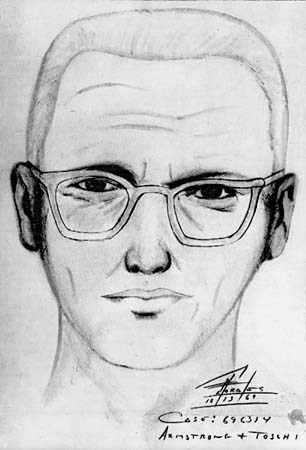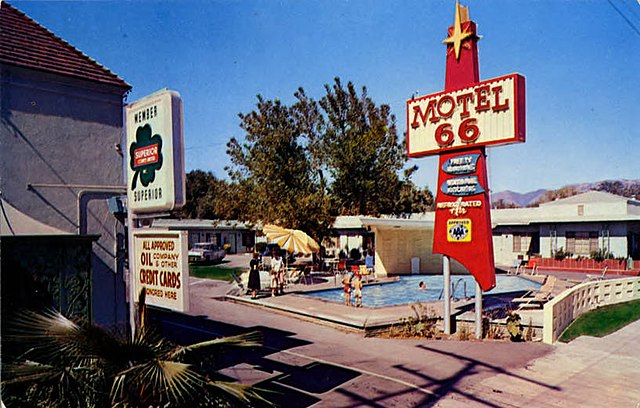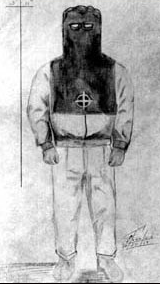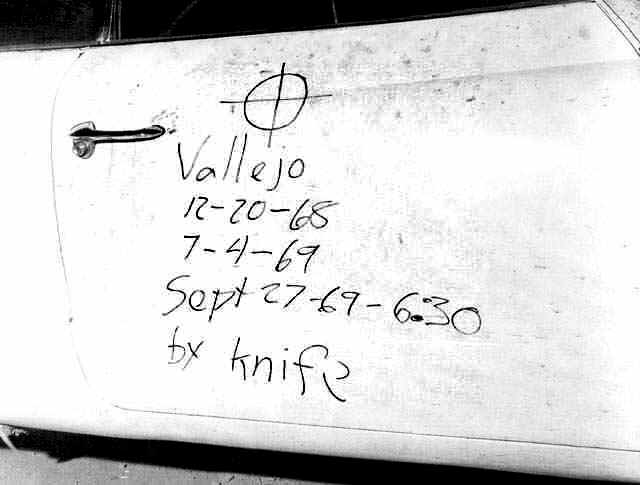“I like killing people because it is so much fun. It is more fun than killing wild game in the forest because man is the most dangerous animal of all.”
Those are the chilling words of a man who put his belief into practice – the Zodiac Killer. He terrorized the San Francisco Bay Area throughout the late 1960s and early 1970s and was never caught or identified.
He popularized, for lack of a better word, several tropes that we associate with serial killers today and we find in numerous crime shows, movies, and books – taunting the police, giving himself a unique name, and using the media to feed his craving for attention.
He disappeared without a trace and fifty years of investigation have yielded only one solid suspect, but not enough evidence to arrest. Like Jack the Ripper, the Zodiac seems guaranteed to remain one of the biggest question marks in the annals of criminal history.

The Terror Begins
On December 20, 1968, 17-year-old David Arthur Faraday climbed in his Rambler station wagon and went to pick up 16-year-old Betty Lou Jensen. They had only known each other for a couple of weeks. They went to different high schools in Vallejo, a city located within the San Francisco Bay Area, and this was supposed to be their first date.
David went by the Jensen home to meet Betty Lou’s parents. Afterwards, the couple stopped by a friend’s house on their way to a concert. Their last stop of the night was a secluded area along Lake Herman Road which was a popular lover’s lane for the local teens.
The two of them were hoping for some privacy, but another car soon pulled up alongside them. A dark figure walked out and approached Faraday’s Rambler. He pulled out a .22 caliber semi-automatic pistol and shot the vehicle, purportedly to get the high-schoolers to exit.

David Faraday was his first target. The killer shot him once in the head. Betty Lou Jensen had time to make a run for it, but she didn’t get far. Her body was found 28 feet away from the car, shot five times in the back. Faraday was still alive when a passing motorist stumbled onto the crime scene, but he died before he reached a hospital. The Zodiac Killer had claimed his first victims.
Of course, nobody knew it at that point. The first detectives who were assigned the case investigated it just like any other double homicide. Jensen’s best friend later criticized the officers, saying that they had already made up their minds that the killings had to be drug-related somehow and refused to pursue any other areas of investigation.
They looked at an ex-boyfriend of Betty Lou, but he was at home watching a movie with his family on the night of the murders. They investigated two locals who had been out that night hunting raccoons, but their guns didn’t match the murder weapon. They also heard that two white men spent the night scaring teenagers by chasing them around in a blue sedan, but they were never identified.
It wasn’t until after the holidays when the typical leads dried up that investigators concluded that the killings were, in fact, the work of a “murderous maniac” who had no connection to the victims. A few months later, their new hypothesis was confirmed when he killed again.
Mageau and Ferrin
On July 4, 1969, a very similar scenario unfolded when the gunman pulled his car behind a couple parked in another secluded area, this time the Blue Rock Springs Golf Course, just a few miles away from the first crime scene. These victims were a little older. Michael Mageau was 19 years old while his girlfriend, Darlene Ferrin, was 22.
The killer got out of his car and pointed a flashlight at the couple so they couldn’t see him. At first, they thought he was a police officer so they got out their IDs as he approached their car. However, as soon as he reached the driver-side window, he started shooting. He fired five shots inside the car and then simply turned around and slowly made his way back to his own vehicle. However, he heard Michael Mageau moaning in pain and, realizing that he was still alive, went back and put two more bullets into each body before leaving the scene.

Less than an hour later, the Vallejo Police Department received a call traced to a phone booth just a few blocks away from the station. The man on the line said:
“I wish to report a double murder. If you will go one mile east on Columbus Parkway to a public park, you will find the kids in a brown car. They have been shot by a 9 mm Luger. I also killed those kids last year. Goodbye.”
As it turned out, the police were already aware of the shooting. A few teenagers had found the couple just minutes after the killer left and this ended up saving Michael Mageau’s life. Darlene Ferrin was pronounced dead at the hospital, but Mageau survived the attack. Not only that, but he saw his attacker, because the shooter didn’t bother to hold up the flashlight the second time around. He described the killer as a white man in his late 20s, early 30s, short, around 5’8” or 5’9”, with a stocky build, brown hair, and round face.
This Is the Zodiac Speaking
It didn’t take long before the murderer made his presence known again, but this time, however, he didn’t kill more people, instead he reached out to the media. On August 1, less than a month after the attack on Mageau and Ferrin, three newspapers from the Bay Area received letters from the killer. They were the San Francisco Chronicle, the San Francisco Examiner, and the Vallejo Times Herald. The letters were almost identical and the criminal used them to take credit for both shootings. They differed in one way. The killer had created a 408-symbol cryptogram, which is a puzzle made using encrypted text. He split it into three and sent each newspaper one part, telling them that solving the cryptogram will reveal his identity.
He also demanded that all the newspapers publish their sections on the front page, otherwise he would “cruse [sic] around all weekend killing lone people in the night then move on to kill again, until I end up with a dozen people over the weekend.” The Chronicle did not obey his instructions, instead publishing their cryptogram on page four alongside a quote from the Vallejo Police Chief saying that they had not confirmed that the letters came from the real killer and asking for more information to prove his identity.

The gunman did not act on his threat. Instead, he gave in to the request of the police chief and wrote another letter, this time only to the Examiner, in which he included details about the murders that were not public knowledge. There was no doubt anymore that the killer was also the author, but there was something else notable about this particular letter. It began with the chilling words “Dear Editor: This is the Zodiac speaking.” It was the first time that he gave himself this name which would go on to become one of the most infamous words in criminal history. He soon accompanied it by a crosshair symbol which he often used as his signature, thus making Zodiac perhaps the only serial killer who had his own logo.
Going back to the cryptogram, usually referred to as the Z 408 cipher, it actually didn’t take long for somebody to crack it. Less than a week after it was published, a couple of amateur cryptologists named Donald and Bettye Harden from Salinas contacted the San Francisco Chronicle to tell them they had the solution.
For you cryptology buffs out there, the way the Hardens solved the cipher was by finding a few cribs. A crib is a word or phrase which you suspect from the outset will appear in the message. In this case, Bettye Harden did a bit of clever profiling on the creator of the cryptogram. She reasoned that given the Zodiac’s craving for attention, the message will begin with the one-letter word “I.” She was also certain that the word “kill” or “killing” had to appear somewhere, perhaps even the phrase “I like killing.” Turns out, Bettye was right on the money. “I like killing” were the first three words in the cipher. Once she knew that, deciphering the rest of the message was just a matter of time.
As far as the content was concerned, it wasn’t the big breakthrough investigators were hoping for. Despite his promise, the Zodiac was not foolish enough to include his identity in the message. Instead, he talked about how he enjoyed killing and that he planned to continue to do it so that his victims would become his slaves when he is reborn in paradise and giving his name would only slow him down. The whole message was coherent, albeit rife with spelling errors, except for the last group of 18 letters (ebeorietemethhpiti) which appeared to be gibberish. If there is some hidden meaning behind them, we haven’t figured it out yet.
More Victims
The little exchange he had with the media did not hold the Zodiac for long and, the following month, he was ready to claim more victims. On September 27, 1969, he attacked a college couple who were picnicking by Lake Berryessa in Napa County, California.
Twenty-two-year-old Cecelia Shepard and 20-year-old Bryan Hartnell were approached by a man who matched the description given by Michael Mageau. As he made his way towards the couple with a gun in his hand, he put on a strange black hood like something an executioner would wear. It also had the Zodiac crosshair symbol on the front and the gunman complemented it with a pair of sunglasses.
He told the couple that he was an escaped convict and that he intended simply to rob them and steal their car. This might have allowed them to lower their guard somewhat, as they were tied up. Once they were immobilized, though, the Zodiac pulled out a knife and stabbed them both multiple times. Afterwards, he hiked up to where Hartnell had parked his car and, using a felt-tip pen, wrote on the door “Vallejo/12-20-68/7-4-69/Sept 27–69–6:30/by knife.” These were the dates of all the killings.
Clearly, even if he used a knife instead of a gun this time, he did not want anyone to think that somebody else committed these murders. But this was still not enough. Later that day, he called the police again and said:
“I want to report a murder—no, a double murder. They are two miles north of park headquarters. They were in a white Volkswagen Karmann Ghia…I’m the one who did it.”
Once again, the Zodiac made the call from a phone booth just a few blocks away from the police department he was calling. It was becoming pretty clear that taunting the authorities and showing them that he was smarter was almost as important as the killings themselves.
Just like before, one of the victims survived the attack. Both Shepard and Hartnell were still alive when they were discovered. They were taken to the hospital, but Shepard succumbed to her injuries while Hartnell made a recovery.
The last known Zodiac killing took place just two weeks later, in the middle of San Francisco. On October 11, cab driver Paul Stine was murdered on the job. A white man who matched the previous descriptions of the Zodiac got into his cab and asked to be taken near Presidio Park. Once they reached their destination, the passenger shot Stine once in the head. Afterwards, he took the victim’s keys, his wallet, and cut off a piece of his shirt. The killer was seen by multiple witnesses as he walked away and they were able to give a description.
This murder was so different from the rest that nobody initially suspected the Zodiac as being the culprit. They thought it was a regular robbery that escalated to homicide. However, like before, the killer took steps to ensure that nobody else would get credit for his work.
The Zodiac Speaks Again
Paul Stine is the last murder definitively attributed to the Zodiac. We’ll get into other possible victims in a bit, but for now we notice that, as soon as the killings stopped, Zodiac’s communication with the media increased. He sent over two dozen letters in the following years. His next one arrived at the San Francisco Chronicle just a few days after Stine’s death, alongside a piece of the cab driver’s shirt to prove that he was the killer. Zodiac also mocked the San Francisco Police Department for its inability to catch him and ended the letter with an ominous threat. He said:
“School children make nice targets, I think I shall wipe out a school bus some morning. Just shoot out the front tire & then pick off the kiddies as they come bouncing out.”
Fortunately, the Zodiac never followed up on this threat, but his words had the desired effect of causing terror and chaos in the city, even spurring talks of cancelling school altogether. It was becoming more and more evident to the people investigating his murders that what the Zodiac enjoyed most was feeding off the public fear and attention, perhaps even more so than the actual killings. After all, he rarely bothered to even check if his targets were dead after he attacked them. On the other hand, he always went to great lengths and even risked getting caught in order to ensure that everybody knew he was the one responsible.

A very strange episode occurred the following week when someone alleging to be the Zodiac called the police again and demanded that either F. Lee Bailey or Melvin Belli, two of the most famous lawyers in the country, appear on a talk show called A.M. San Francisco hosted by Jim Dunbar. Belli complied, went on the show and eagerly waited alongside Dunbar for the Zodiac to call. The suspect actually did call, not once, not twice, but 54 times in two hours. Each time, he would only say a few words, hang up, wait a bit, and then phone again. Eventually, he agreed to turn himself in and arranged for a surrender location in Daly City. It probably won’t surprise you to discover that he never showed up, although, to be fair, it was never established with any certainty that the caller was the actual killer and not just some guy looking for his 15 minutes of fame.
The real Zodiac did get in touch soon after, this time with a letter containing another cipher referred to as Z 340. While the first cipher took about 20 hours to crack, this one remains unsolved even today, 50 years later.
Two more ciphers followed. One of them, Z 13, was really short and only had 13 symbols which were preceded by the words “My name is –.” The last one was the most complex of all and also included a map of the Bay Area alongside instructions on how to use it correctly. If solved, it would have led to the location of a bomb buried somewhere near Mount Diablo. Neither of these ciphers was ever solved conclusively, either.
It’s possible they were never meant to be solved and that they were just full of gibberish. Some cryptologists argue that the Zodiac significantly increased the difficulty of his ciphers after the first one was solved so quickly, while others believe he filled them with random symbols to make sure that nobody could crack them and, therefore, nobody could show that they were smarter than him.
Were There Other Victims?
Like with most other serial killers, investigators had to consider the possibility that the Zodiac had other victims. Indeed, they suspected that he might have started killing as early as 1963 and that he continued after the death of Paul Stine.
In the last ever letter he sent to the media, the Zodiac bragged about having 37 victims. Mailed on January 29, 1974, it is known as the “Exorcist letter” because the killer starts off praising the movie The Exorcist as “the best saterical comidy (sic) that I have ever seen.” He ends it by writing “Me – 37/ SFPD – 0.”
Not a lot of people actually think the Zodiac had these many victims. For starters, he had already made plenty of other claims and threats that were false like the attack on the school bus or the bomb buried near the mountain… But more importantly, with his five known victims, the Zodiac always seemed to take extra steps to ensure people knew he did it. Would he murder dozens of other people without taking credit? Or was this simply just another throwaway line to make himself feel superior to the authorities?

Regardless of what his profile might have suggested, the police couldn’t dismiss other possible Zodiac victims just because they didn’t fit his behavior. The first murders that caught their attention took place in 1963 – the high school couple of Robert Domingos and Linda Edwards were shot to death on a remote beach near the town of Gaviota. Not only that, but the same kind of weapon and type of ammunition were used as in the attack on David Faraday and Betty Lou Jensen. Contrary to the Zodiac, though, this killer wanted to get rid of the bodies by placing them in a rundown old shack and trying, unsuccessfully, to light it on fire.
Another suspicious case was the murder of 18-year-old Cheri Jo Bates in 1966. She was stabbed to death in an alley on the campus of Riverside City College. The Zodiac did eventually take credit for her death in one of his many letters, but this happened in 1971, only after the media publicized her story.
There was also the attempted kidnapping of Kathleen Johns and her infant daughter. On March 22, 1970, her car broke down and she was picked up by a strange man. He said he would drop her off at a gas station, but he kept driving past one gas station after another. Johns became nervous enough that she ran out of the car when the man stopped at an intersection and hid in a field. The stranger came looking for her with a flashlight, but eventually gave up and left. Later, at the police station, Johns recognized the composite of the man who killed Paul Stine as the same person who picked her up.
The last case that warrants mention was the disappearance of a nurse named Donna Lass in 1970. Her body was never found, but a Zodiac-style letter where she was referred to as “Victim 12” and contained details regarding her location was sent to journalist Paul Avery from the San Francisco Chronicle. It is possible that the Zodiac, indeed, killed this woman, or it is also possible that he was, once again, lying to make himself feel more important. The third and most interesting idea suggested that the letter was written by the actual killer, deliberately imitating the style of the Zodiac to make him take the blame for it.
Who Was He?
Now we arrive at the big question – who was the Zodiac? In the decades following his murders, over 2,500 suspects have been investigated, yet none of them have ever been arrested or even charged with anything.
We might as well start with the biggest one of all – Arthur Leigh Allen – a convicted child molester who lived in Vallejo. To this day, he remains the only suspect ever named publicly by the police. Robert Graysmith, a cartoonist who worked for the Chronicle at the time of the killings and who wrote two definitive books on the Zodiac case, also named Arthur Leigh Allen as being the murderer.
There was evidence for Allen as the Zodiac. He owned a pair of boots identical to those of the killer. He had a watch with the crosshairs symbol on it. He was even identified out of a photo lineup by one of the surviving victims of the Zodiac. However, the photo ID occurred many years after the attack and a questionable DNA test back in 2002 may have exonerated him, although it was later deemed inconclusive. The problem with DNA in this case is that there are no good, reliable samples. Officers back in the 60s and 70s had no way of knowing that DNA would end up becoming so important in the future so the evidence was handled poorly and tainted.
There was some renewed hope a few years back after the Golden State Killer was finally identified using a genealogy website. Investigators hoped that the same thing could happen with the Zodiac so they resubmitted for analysis stamps that had been licked by the killer to see if they could obtain a full DNA profile. However, this was back in late 2018. No new developments were ever announced so, presumably, the analysis didn’t work.
Arthur Leigh Allen died in 1992 of a heart attack and many people remain convinced that he was, in fact, the Zodiac.
One of those people was Dave Toschi, the chief investigator on the case. We should take a quick moment to mention him more in-depth as he was quite a character himself. He had the reputation of a tough guy, although he enjoyed wearing bow ties and colorful jackets. He served as inspiration for Dirty Harry, as well as Steve McQueen’s character in Bullitt. He had an ignominious and bizarre departure from the Zodiac case in 1978 when it was discovered that he had been sending letters under fake names to San Francisco newspapers, praising himself and the work he was doing on the case. At one point, he was even suspected of forging a Zodiac letter, but this idea was later dismissed.
Like we said, Allen was the only suspect the police ever named, but this did not stop other amateur sleuths from advancing all sorts of ideas . Many of them claim that other notorious killers like BTK or the Unabomber were also the Zodiac. One former detective wrote a book where he advanced the outlandish hypothesis that a convicted serial killer by the name of Edward Edwards was responsible for many other infamous unsolved murders. This includes the Zodiac killings, but also the Black Dahlia, JonBenet Ramsey, and Jimmy Hoffa.
Then there are a bunch of people who have come forth in recent years, claiming that their deceased fathers or acquaintances had been the Zodiac: Jack Tarrance, George Hodel, Guy Ward Hendrickson, Louis Myers have all been advanced as suspects by people who knew them closely. Each one comes with enough proof to make them possible candidates, but nowhere close to confirm them.
There are so many questions that remain unanswered. Did the Zodiac truly stop killing? Why did he stop writing letters? Do his unsolved ciphers actually contain any useful information? Was Arthur Leigh Allen the killer all along? It seems like the Zodiac is destined to remain a mystery forever.



